Says Hanbok designer Kim Hyun-sook who claims that "clothes are people."
By Culture Editor Sion Khan
Hanbok designer Kim Hyun-sook who was certified as a Grand Master (Master Number G13-17-02-21), established the “Kim Hyun-sook Wooriot Culture Research Institute” in 1988.
She also established the Korean Clothing Culture and Social Education Center to operate it as an educational center for younger people.
She is conducting research to restore and reproduce our culture, the traditional clothing of Korea that is over 5,000 years old.
She is also striving to popularize Hanbok so that the public can enjoy it by setting it appropriately for modern people by taking advantage of the unique advantages and beauty of Hanbok.
My relationship with Director Kim Hyun-sook started from meeting each other at the Gaecheon Daeje, an event to commemorate the founding of the Dangun Emperor, the founder of the Korean people. During the event, Korea's history and traditional fashion shows showing from the Gojoseon period to Goguryeo, Silla, Baekje, Goryeo, and Joseon were held at Samsung Palace in Hadong.
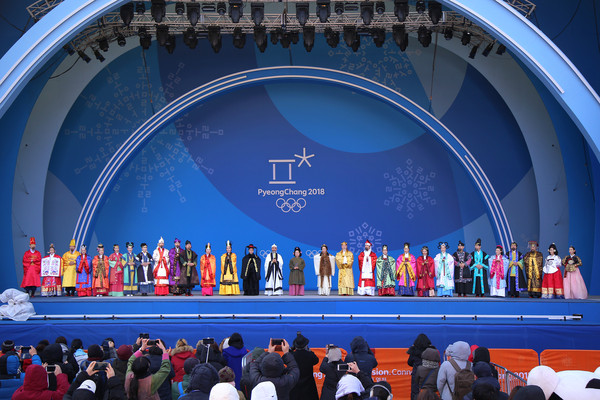
She is a Grand Master certified as a Korea’s artistic & cultural master, but she is quite different from any other craftsman.
She is not just a craftsman who builds clothes, but a craftsman with a strong sense of national consciousness to reveal the spirit, and soul of Korea through Hanbok, along with the historicity of the Korean people with more than 5,000 years of history.
Director Kim says, “Clothes are people.”
She is a patriot who loves the Republic of Korea and loves the Korean people, and a messenger who conveys her national consciousness and philosophy through clothes.
Clothes are considered one of the three essential elements of human life, clothing, food, and shelter, protecting or decorating the body and appearance.
The concept of clothing also refers to the biggest difference between humans and other creatures.
All creatures other than humans, should never wear clothes for life, and they naturally take it for granted that they live a whole life in nudity without clothes. Among many animals, only humans make clothes and cannot live in society without clothes.
Clothing is an important thing that determines human appearance, and it includes history, tradition, culture and art.
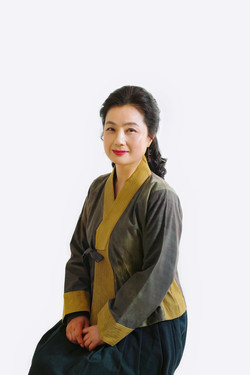
In view of this, Director Kim’s motto is 'clothes are people' and 'clothes are wings.'
Along with the basic philosophy of "Beautiful clothes make people beautiful as if they have healthy mind in a healthy body", she contained the identity of Korea and the Korean people and the beautiful and practical clothing culture in hanbok.
Therefore, Hanbok represents the spirit of Korea, and furthermore, the appearance of our people wearing Hanbok is another element of world tourism culture.
Kim Hyun-sook hosted a Korean traditional costume fashion show at the PyeongChang Winter Olympics in Korea and in San Francisco.
On March 23, 2022, a Hanbok fashion show was held at Gyeonghoeru Pavilion in Gyeongbokgung Palace, which has the symbolism of Korea palace, and "The History of Changes of Korean Hanbok Fashion Show” was held.
At this event, a fashion show steeped in history was held with success, showcasing the kings and queens' custom-made attire for each era.
At the opening ceremony of the Winter Olympics held in Beijing, China, Korea’s traditional cloth ‘Hanbok’ was introduced as if it is cloth of Chinese minority. So, this event contains the will to introduce our Hanbok to the world.
It was also held for the purpose of the 2022 Qatar World Cup Friendship Fashion Show.
The Republic of Korea was founded on August 15, 1948, but it has a long history of more than 5,000 years, including Gojoseon, Goguryeo, Baekje, Silla, Goryeo, and Joseon, since Dangun founded the country 5,000 years ago to maintain the people and inherit the tradition.
As much as the long history, the history of clothes worn by the Korean people has evolved in various ways.
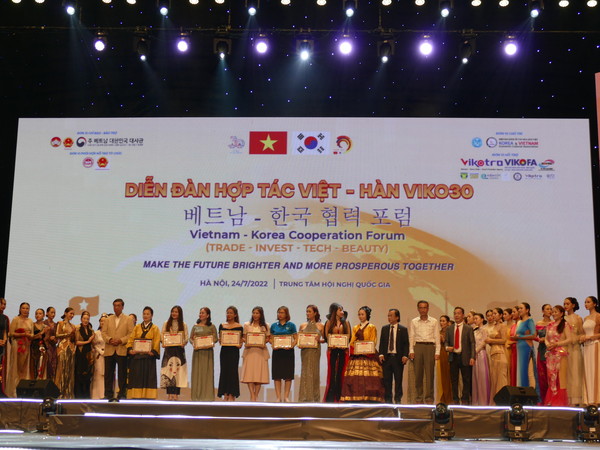
For this reason, Director Kim seeks to find the roots of the Korean people through clothes and to study the Korean people's clothing culture to awaken cultural identity to the modern Korean people living today.
She held a hanbok fashion show with clothes drawn on Goguryeo murals that disprove Korea's 5,000-year history, excavated clothes, Buddha costumes, and clothing relics, and made them into consideration, while opening K-hanbok.
Director Kim hosted the "Master Kim Hyun-sook Traditional Costume Fashion Show" at the Medal Plaza of the 2018 PyeongChang Winter Olympics, creating an opportunity to inform people around the world of the excellence and beauty of Korean culture.
It is Director Kim's basic philosophy and vision of making clothes to value people and to make clothes that are emotionally and physically healthy and to spread them all over the world.
Traditional Hanbok is a hanbok that contains the style and spirit of ideas, customs, actions, forms, and techniques that have been passed down from ancient times. It can be identified as Goguryeo tomb murals and Silla and Baekje relics.

Hanbok, which appeared in the customs of Hyewon Shin Yun-bok and Danwon Kim Hong-do, painters of the Joseon Dynasty, can trace the tradition of the Korean people in the past.
From the early Joseon Dynasty, Goryeo, and Unified Silla, to the basic clothes of Goguryeo tomb murals, and although there is no visible data, it can be continued even to Gojoseon. The origin of the basic clothes is the Scythian style and the northern ethnic style of clothing
In the Gojoseon Dynasty, the Korean people made great progress in clothing culture as they used cloth woven from kudzu and hemp, and the skills of weaving increased.
After that, the ancient Korean costume culture of the Three Kingdoms period of Goguryeo, Baekje, and Silla was highly developed and played a leading role compared to neighboring countries, as can be seen through old historical records and tomb murals.
Director Kim studied Korean traditional clothing throughout her life and demonstrated the characteristics of royal clothing from the Gojoseon Dynasty to the Joseon Dynasty, showing the status of Korean traditional hanbok at various international events.
Moreover, various events are held with great significance, such as demonstrating the traditional classical hair along with the costumes of each era, and reproducing and presenting the true beauty of Korean tradition by combining the costumes and hair.
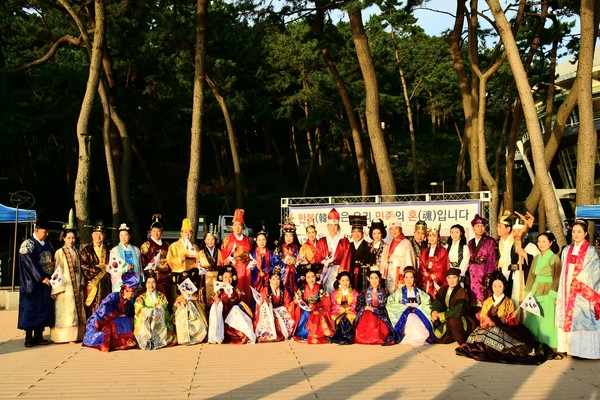
According to the Gojoseon Budoji (a book from Gojoseon era), there is a record that the people of Gojoseon wore clothes with large white sleeves made of hemp cloth, a cape and pants, leather shoes, and a cone-shaped hat.
In the Goguryeo era, it can be found in paintings in Goguryeo murals, where colorful clothes were worn using colored thread and decorated with gold and silver.
In the Baekje era, data were insufficient compared to Goguryeo, and a pleated skirt was found in a tomb in the Ashoka period of Japan, which helped to examine Baekje's clothing, and it can be based on the Baekje costume shown in Yangjikongdo (a document depicting the procession of Baekje envoys during the Liang Dynasty in China).
Costumes of the Silla Dynasty were similar to those of Goguryeo, but it was popular to wear gold jewelry.
It is said that the colors of official uniforms in the Silla Dynasty were determined in the 18th year of King Taejo, including purple, rain, blue, and yellow.
During the Gaya and Balhae periods, lotus and cloud-shaped verse were mainly used, and the traditional Korean clothing style from Gojoseon, divided up and down, was worn with a belt around the waist instead of a straight collar. Costumes of the Gaya and Balhae eras were mainly used in lotus and cloud patterns.
Director Kim was born in Busan, in a strict educator family.
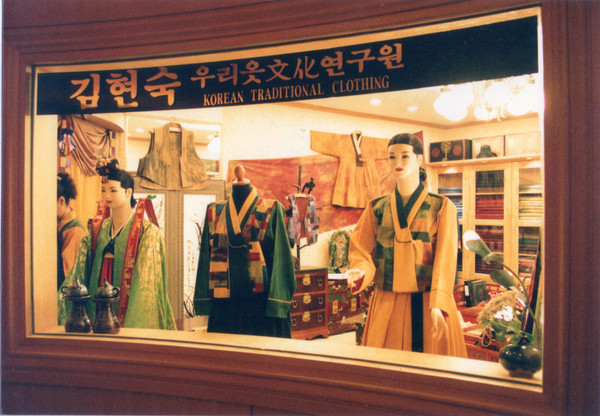
Since childhood, she liked drawing, and studied various arts such as drawing cartoons and colors from a young age.
Taking advantage of such artistic talent, she has a unique history of working as an assistant in a famous fashion studio in Busan since middle school.
In the year when Kim turned 19, an acquaintance who watched her responsibly handle all the work in the clothing store despite her young age suggested the business of running the clothing store herself.
So Kim became the owner of a clothing store at the age of 19, making clothes herself and managing customers. Her store became famous in Busan.
Director Kim, who had become so famous, suffered a lot of economic loss due to an acquaintance she trusted in her late 20s, and since then, she has had a fundamental introspection on her life and business.
Leaving downtown Busan, she stayed in Gijang-gun, where there is a beach, for eight months and had time to look back and reflect on her life. Through that time, she realized her deep mission as a person who makes clothes.
It is the mission of 'clothes are people'. That's why she realized that she had to make clothes that were healthy, beautiful, practical, and precious to people.
That is why she decided to make clothes for people who live healthy in nature, not artificially make clothes. She thought she should make clothes worn by precious people.
So, Director Kim started to study nature dyeing, thinking that natural dyeing will become the trend in the 21st century.
Also around that time, she started to study Korean clothes and Hanbok professionally from Dr. Yu Hee-gyeong, a master of Korean costume research.
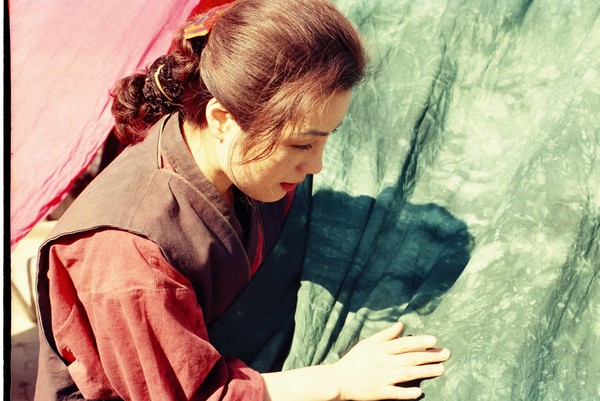
In the midst of such rest and reflection, it naturally became another opportunity for her to think about Buddhist culture and also Buddhist clothing.
Although our traditional culture is gradually fading due to the Japanese colonial era and industrialization, but the Buddhism, which has continued Korean tradition for thousands of years at the religious level, is still a place where our traditional culture is alive.
By interacting with many monks and artists, she approached our traditional culture more closely.
Since then, while studying Korean traditional clothing in depth, she felt the need to make Korean traditional clothing, which is convenient for everyday life, and made it her belief.
She decided to make and distribute healthy clothes, beautiful clothes, practical and economical clothes to people.
She dyes her clothes using the five colors of yellow, blue, white, red, and black, which are known as the five way colors of traditional Korean colors.
The energy of yin and yang becomes heaven and earth.
Again, the five elements of wood, fire, earth, metal, and water are created by the two energies of yin and yang. Five colors based on the idea of yin-yang.
Natural dyeing obtained from pure nature is a beneficial and nature-friendly color for humans, so it suits people well and expresses natural beauty.
Therefore, Kim’s idea which is "nature-friendly natural dyeing is leading in the 21st century," was pioneering idea.
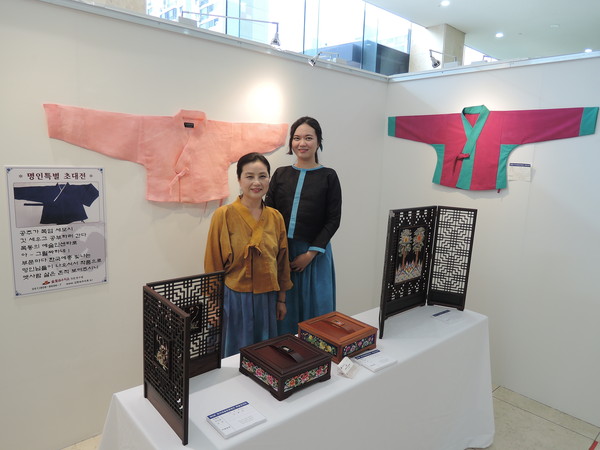
Since there was no manual on natural dyeing, she had no choice but to continue experimenting with dyeing methods that had been handed down by word of mouth.
The clothes that were painted in that way are the "Beautiful Life Uriot and Beautiful Devotee Clothing" obtained by Director Kim's reflection, meditation, and prayer.
The clothes made in this way were used preciously in temples and widely distributed to the public, so the movement to wear Korean clothes was able to take place in earnest.
In addition, a book titled “Costume excavated from the 15th and 16th century” was published, and the color of the excavated clothes captured in the photo is noble and mysterious, and it feels like Director Kim’s dyeing, so her cloths was named “Beautiful Devotee Cloth,” and it became known to the Buddhist world.
Coincidentally, in 1995, when Busan Buddhist TV, a broadcast specializing in Buddhism, opened its doors, it held a fashion show at the Busan KBS Hall in commemoration of the opening with beautiful devotee clothes. It was an opportunity for Director Kim to be reborn as a successful Hanbok designer by studying our clothes and hanbok and popularizing them.
In this way, the clothes studied by Director Kim, healthy, beautiful, practical, economical, and clothes with the spirit of the Korean people were born.
Since 1988, at the “Kim Hyun-sook Korean Clothing Culture Research Institute” located at 13, World Cup-daero 467-gil, Busanjin-gu, Busan, she has been conducting research and restore and reproduce the traditional Korean clothing culture.
Based on this, she is making efforts to popularize Hanbok so that the public can enjoy our clothes by utilizing the unique strengths and beauty of Hanbok.
Kim Yi-rang, a master transmission assistant, and also daughter of Director Kim, is the vice president.
She majored in fashion at Yonsei University and graduated with a master's degree. Subsequently, she majored in fashion aesthetics at Pusan National University and acquired the doctorate.
Currently, she is training younger generations at universities, and on the other hand, she maintains her mother's philosophy of "Mission to cherish people through clothes and save the spirit of the Korean people."
In the future, she is expected to widely publicize the beauty of Hanbok around the world and enhance Korea's status.

